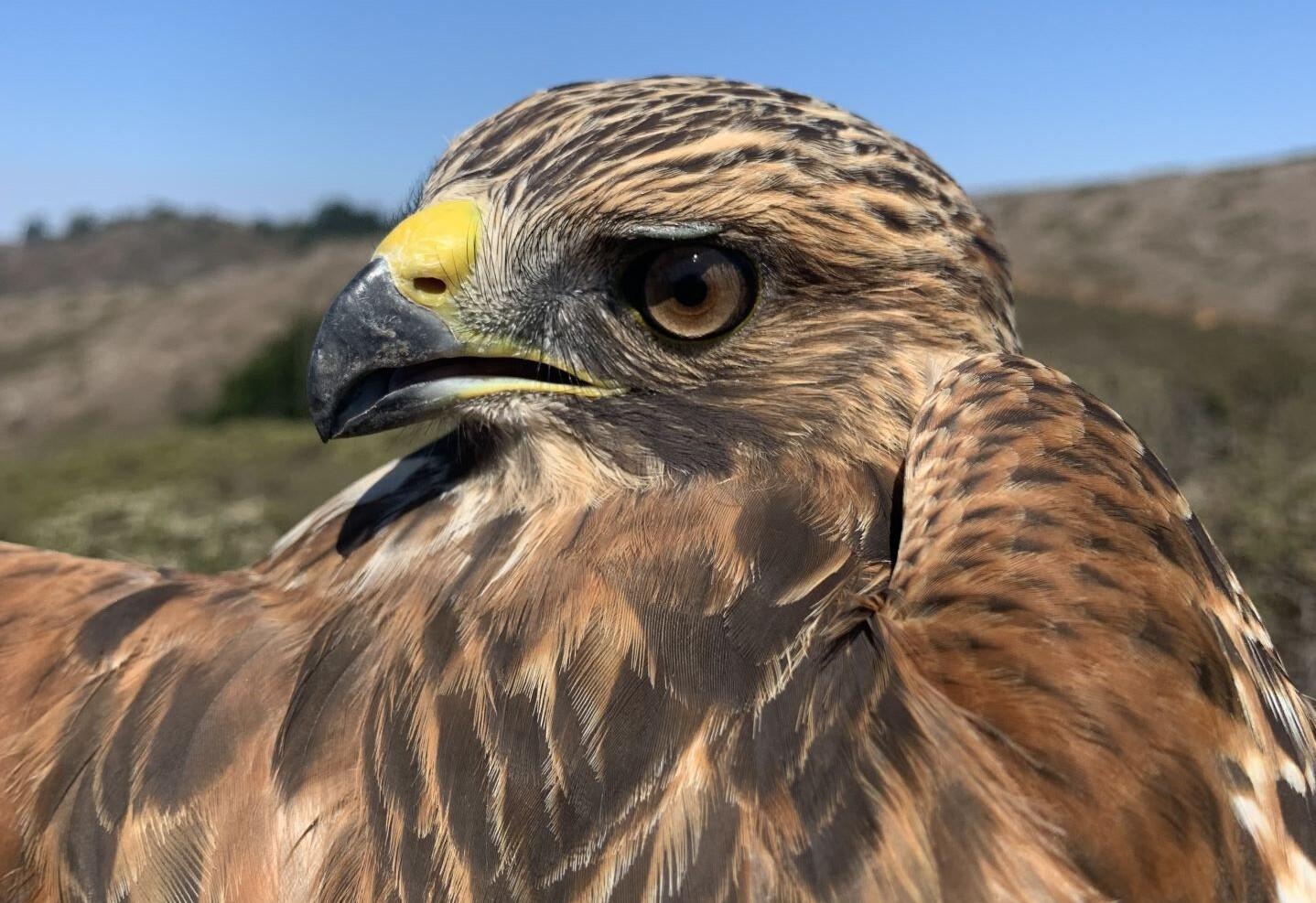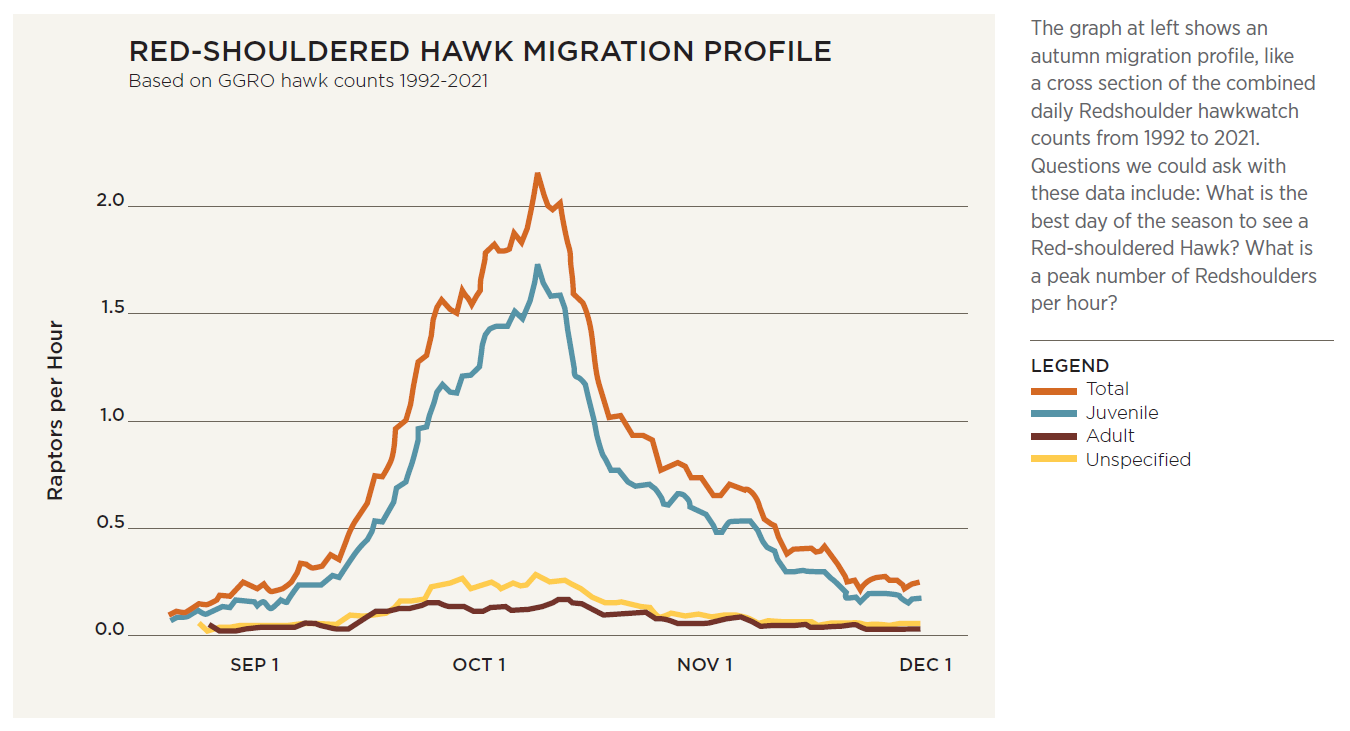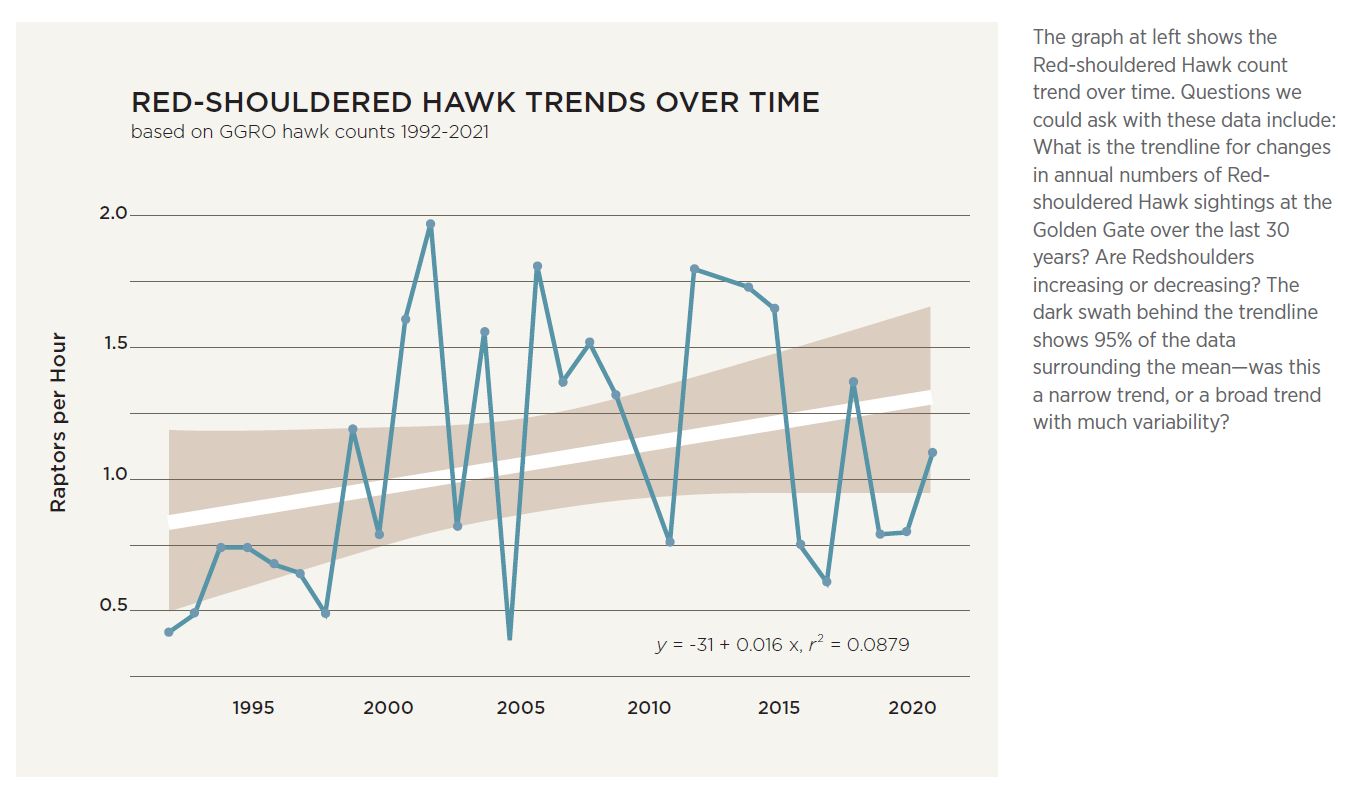

Red-shouldered Hawks are a favorite for Golden Gate Raptor Observatory volunteers. For starters, western adult Redshoulders are beautiful, with black-and-white-checkered flight feathers set against a deep rufous color on their shoulders and breast. Redshoulders are also unique birds of prey (raptors) in California because they fill a niche between the soaring hawk and the forest-hunting hawk, displaying behaviors of both types. They are found along creeks and rivers, and in oak woodland habitats. Their varied diet consists of small mammals and birds, plus snakes, lizards, fish, crayfish, and worms!
Redshoulders are fairly common in the Bay Area, but like many of the 19 raptor species we track each year, we observe some flux in the number sighted year over year. Check out the animation below to see how our observations changed over the last 30 years of counting.

The above animation displays 30 years of Red-shouldered Hawk counts at the Marin Headlands, year by year from 1992 to 2021. As you watch the years scroll by–and you might need to do this more than once–watch for a few things:
- For each year, how does the maximum rate change (peak Red-shouldered Hawks counted per hour)?
- Is there one peak or are there multiple peaks, or no peak at all?
- Are there a general trends over the 30 years that you can detect, such as lower or higher peaks over time, or peaks occurring earlier or later in the year?
Refresh the page to run the animation again.
Measuring a Migration
How do you measure something as complex and as far-reaching as the Pacific Flyway, the name we give to the huge geography stretching from Alaska to Patagonia where raptor migration is observed? Banding, hawkwatching, radio tracking, and satellite tracking each provides a different and imperfect measure of raptor migration. Data from each method provide us with important clues for seeing the big picture—and for detecting change. See the graphs below for some of the Reshoulder facts that can be learned from hawkwatching. See our 2021 Pacific Raptor report (coming soon!) for examples of what can be learned from banding.


Data collected by the Golden Gate Raptor Observatory, part of the Golden Gate National Parks Conservancy. Thanks to Elizabeth Edson, the Parks Conservancy's Data Manager, for analyzing the data and crafting the three graphs on this page.
Read more about Red-shouldered Hawks in our annual Pacific Raptor report - coming soon!
View our daily hawk count to see how many Red-shouldered Hawks are being counted during the current migration season (August-December each year).

